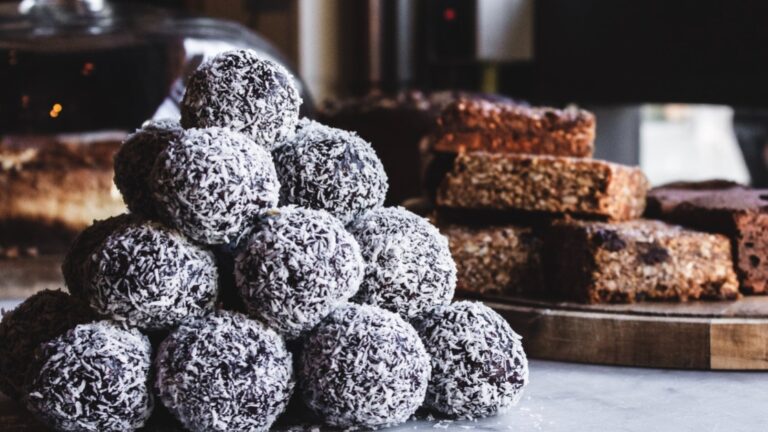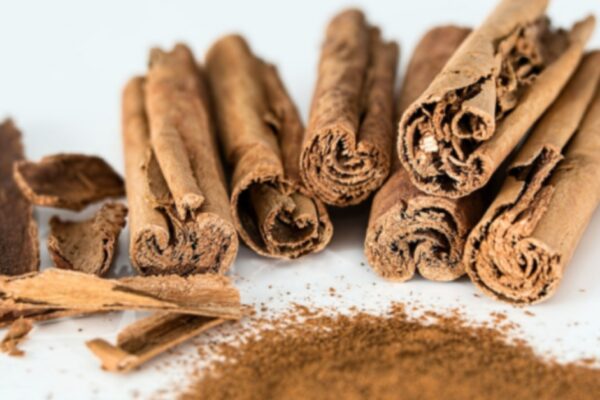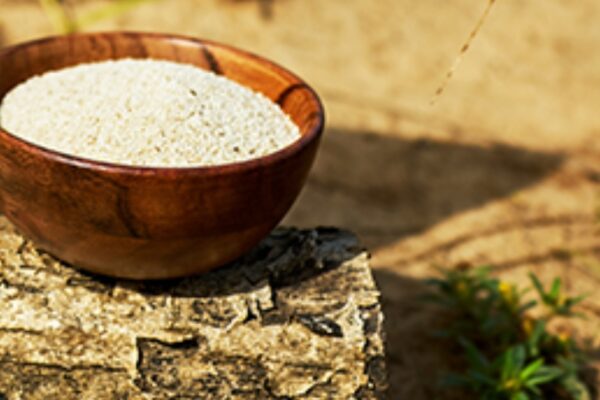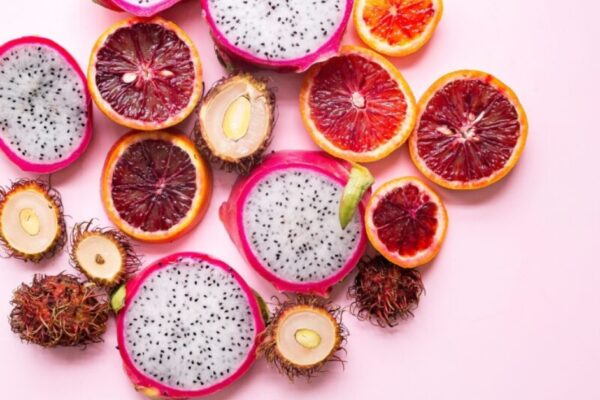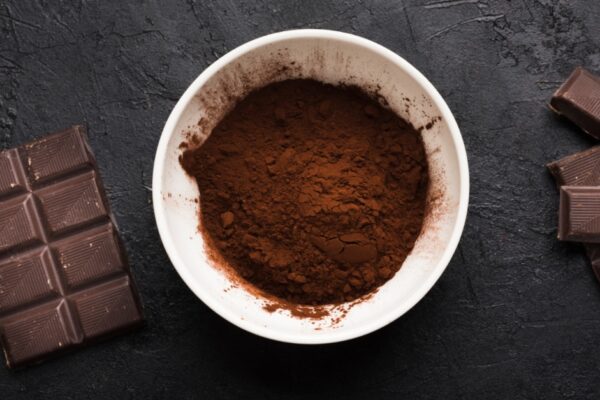These Low-Carb Keto Fudge Banana Truffles are amazingly delicious and are naturally gluten-free. What makes them even more delicious is their low-calorie, low-carb, high fiber, and high protein content. With all these nutritional properties, you can indulge in these truffles absolutely guilt-free!
I’ve always been conscious of what I eat, and those who know me, remember me for my salads and detailed carb counting. Fortunately, I don’t crave sweet food, but when I do get such cravings, I want to make sure that I indulge in smart treats.
Since I’m a health-conscious freak, I get easily lost in researching the benefits of various foods – from basic daily ingredients such as herbs, spices, fruits, and vegetables to superfoods. I also try to seek to optimize various recipes by incorporating nutrient-packed and weight-loss-friendly foods.
Optimizing sweet recipes is particularly one of my greatest passions since when comfort eating takes the lead; calories, fats, and carbs pile up in a blink of an eye! What’s worse, is that once off-track, blood sugar levels go so haywire that getting back on track does not simply happen on the next day. WIth these low-carb, keto-friendly truffles, you can rest assured that you will continue to stick to your diet like a breeze!
Key Ingredients
Banana is one of the key ingredients in this recipe. Banana already contains several essential nutrients and provides benefits for heart health, digestion, and weight loss1.
These low-carb treats are also made with organic coconut flour and Aduna Super-Cacao Powder. Both of these ingredients are rich in fiber, which helps in reducing the total carbohydrates in each truffle. In fact, one truffle contains only 1.6g of net carbs.
Coconut Flour
Coconut flour is a healthy option when it comes to carb counting. It’s naturally gluten-free, high in fiber, and has far lower calories and carbs than standard wheat flour. Coconut flour is rich in certain fats, particularly medium-chain triglycerides (MCTs), which are more rapidly broken down and absorbed into the body. This makes them a quick energy source and less likely to be stored as fat2.
Although almond flour is also low-carb, in my recipes, I like to include coconut flour since it is safe for those who are allergic to nuts. It is also much cheaper than almond flour.
If you are using coconut flour for the first time, you might face some challenges as it is very absorbent compared to regular all-purpose flour and almond flour. Being so absorbent, you need to increase your liquid ingredients to avoid having a dry product. The best thing is to start small by replacing ¼ cup of coconut flour with a 3/4 cup to one cup of all-purpose flour. Once you gain some practice, rest assured that you’ll be glad you tried it (especially when looking at your waistline). Since coconut flour is lower in fat, it is another reason why it makes it a highly absorbent flour.
Coconut flour is an excellent source of fiber (approx. 10g per 30g), which is a plus in maintaining a healthy gut. It also contributes substantially to outweighing the carbohydrate content (18 g per 30g). Comparing this to regular all-purpose flour, you would be regretting not having used coconut flour before! In wheat flour, there are approx. 22 grams of total carbs for every 30 grams, of which only 3 g are from dietary fiber. This results in 18 grams of total net carbs ready to be absorbed by your body! However, you need to remember that in any given recipe you need to use much more wheat flour than coconut flour!
Coconut flour is also naturally high in protein (approx. 6 g per 30 g). Therefore, coconut flour is a good source to easily increase your protein intake. You can simply dust some coconut flour on your breakfast, or add it to your morning smoothie.
Below you can find a comparison of coconut flour with almond and wheat flour for a serving size of 30g. Keep in mind that when using coconut flour in a recipe you’ll only need around 1/4 of almond and wheat flour!
| Coconut Flour* | Almond Flour* | Wheat Flour* | |
| Calories | 120 kcal | 175 kcal | 102 kcal |
| Total Carbs | 18 g | 6 g | 22 g |
| Dietary Fiber | 10 g | 3 g | 3 g |
| Net Carbs | 8 g | 3 g | 18 g |
| Fat | 4 g | 14 g | 1 g |
| Protein | 6 g | 7 g | 4 g |
Cacao Powder
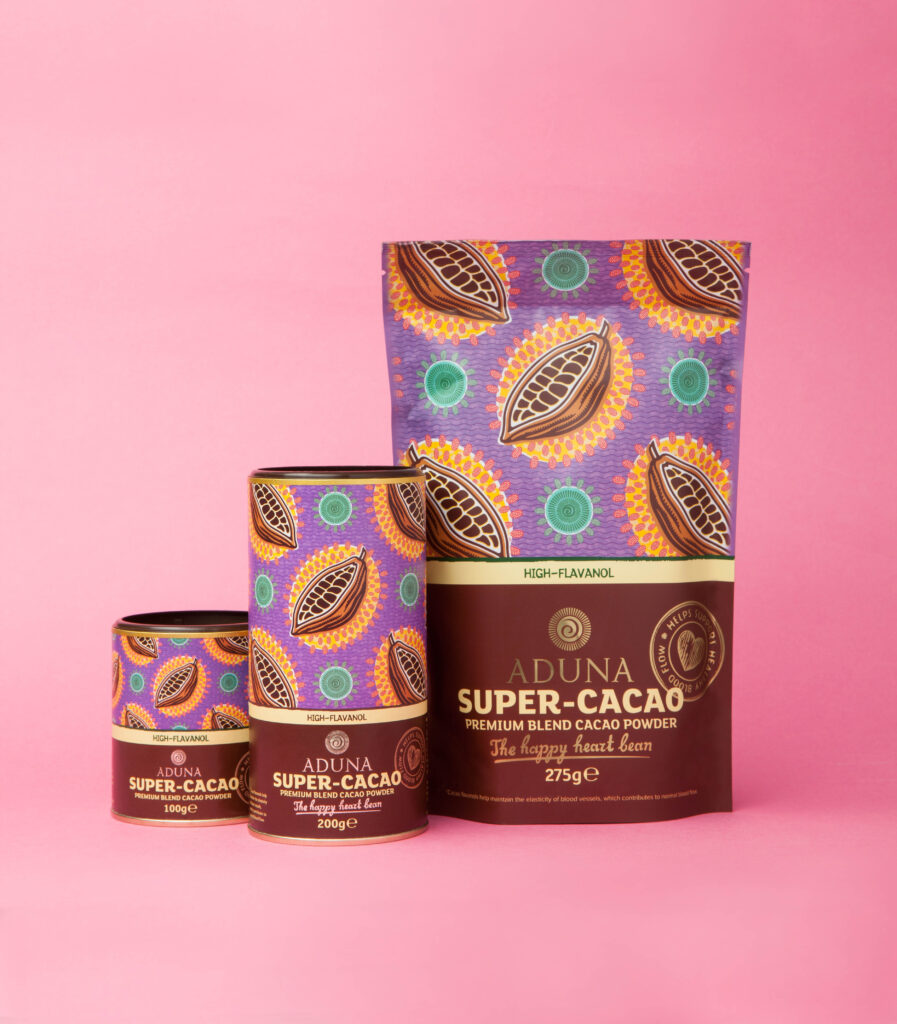
In my recipe, I used Aduna Super-Cacao powder – a product I fell in love with immediately after the first taste. Apart from its delicious, rich chocolatey flavor, it is rich in nutrients and cacao flavanols. In fact, 20g of Aduna Super-Cacao contains at least 200mg of cacao flavanols.
The European Food Safety Authority (EFSA) has scientifically proven and verified that these cacao flavanols help maintain the elasticity of blood vessels, as well as support healthy blood flow.
Aduna Cacao powder also contains 23% natural protein. Therefore, it is ideal for those looking to up their protein, and for vegans and vegetarians who do not always manage to get enough protein in their diet.
Aduna Super-Cacao is also a source of potassium and magnesium, both of which contribute to combatting stress and help you to relax. Every single serving provides 15% and 26% Nutrient Reference Value (NRV) of potassium and magnesium, respectively.
Aduna Super-Cacao also contains 33% NRV of fiber that serves in stimulating your body’s digestive enzymes and better absorption of nutrients. This results in healthy gut and bowel regularity.
You can read about cacao and its benefits here.
Cinnamon
While the high fiber content in both coconut flour and cacao powder should make you feel satiated, cinnamon also helps in regulating your blood sugar levels. Blood sugar control is further reinforced by the flavanols in the cacao powder3.
In this recipe, I particularly used Ceylon cinnamon as it is the safest cinnamon variant (read more on Ceylon cinnamon here). Ceylon is a rich source of antioxidants (65.3%) that neutralize free radicals and prevent or reverse cellular damage. In addition, cinnamon may lend a hand in relieving the pain associated with Irritable Bowel Syndrome (IBS) and in lowering blood lipids(fats)4.
Low-Carb Keto Recipe
With each truffle being equivalent to 30 calories, for a snack of 200 calories, you can eat 6 to 7 truffles. A snack of 7 truffles is just right in macro-nutrients and an attractive and cheaper alternative to a typical low-carb snack bar. So go ahead and enjoy guilt-free!
Low-Carb Keto Fudge Banana Truffles

Healthy, soft chocolaty truffles with hints of banana and coconut. A tremendously delicious treat for the health-conscious.
- 85 grams Ripe Banana (mashed)
- 30 grams Raw Ground Almonds
- 25 grams Aduna Super Cacao Powder
- ½ tsp Stevia
- ⅛ tsp Himalayan salt
- 1 tsp Ground Ceylon Cinnamon
- 2 tbsp Skinny Food Salted Caramel Zero Calorie Syrup
- 1/2 tsp Vanilla Extract
- 24 grams Forever Lite Ultra Chocolate
- 25 grams Unsweetened Dessicated Coconut
- 15 grams Coconut Flour
In a bowl add banana, ground almonds, cacao powder, stevia, salt, cinnamon, salted caramel syrup, and vanilla extract. In neutralizing the taste of the banana I took the liberty of adding more Ceylon cinnamon and some coffee essence (I added ½ teaspoon of coffee essence). Mix all until well combined.
Finish off by adding the Forever Lite Ultra Chocolate Powder and the unsweetened dessicated coconut and mix well until combined.
Take a well-heaped teaspoon of the batter and roll into a truffle ball between the palms of your hand. Place on a parchment-lined baking tray. I placed mine in moulds. Repeat the process until you consume all the batter. If you wish, you make sprinkle some desiccated coconut on top.
Place the baking tray or moulds in the refrigerator to harden. Once they harden up a bit, you can either store them in a freezer-safe ziplock bag or in an air-tight container.
Nutrition value per truffle: Calories: 36, Carbs: 2.3g, Fat: 2.1g, Protein: 1.8g, Sodium: 29mg, Sugar: 0.8g, Fiber: 0.7g [Net Carbs: 1.6g]
The ingredients in this recipe have been carefully sourced to obtain the above healthy, low-calorie, and low-carb nutrition content.
Specific products used in this recipe:
*This recipe includes suggestions for products that we think are useful to our readers. If you buy through links on this page, we may earn a small commission.
*This post includes suggestions for products that Lifestyle Exquisite thinks are useful to its readers. If you buy through links on this page, a small commission may be earned.
Sources
1 Healthline. 11 Evidence-Based Health Benefits of Bananas. 2018.
2 Healthline. MCT Oil 101: A Review of Medium-Chain Triglycerides. 2020.
3 Ramos S, Martín MA, Goya L. Effects of Cocoa Antioxidants in Type 2 Diabetes Mellitus. Antioxidants (Basel). 2017 Oct 31;6(4):84. doi: 10.3390/antiox6040084. PMID: 29088075; PMCID: PMC5745494.
4 Javed I, Faisal I, Rahman Z, Khan MZ, Muhammad F, Aslam B, Ahmad M, Shahzadi A. Lipid lowering effect of Cinnamomum zeylanicum in hyperlipidaemic albino rabbits. Pak J Pharm Sci. 2012 Jan;25(1):141-7. PMID: 22186322.

